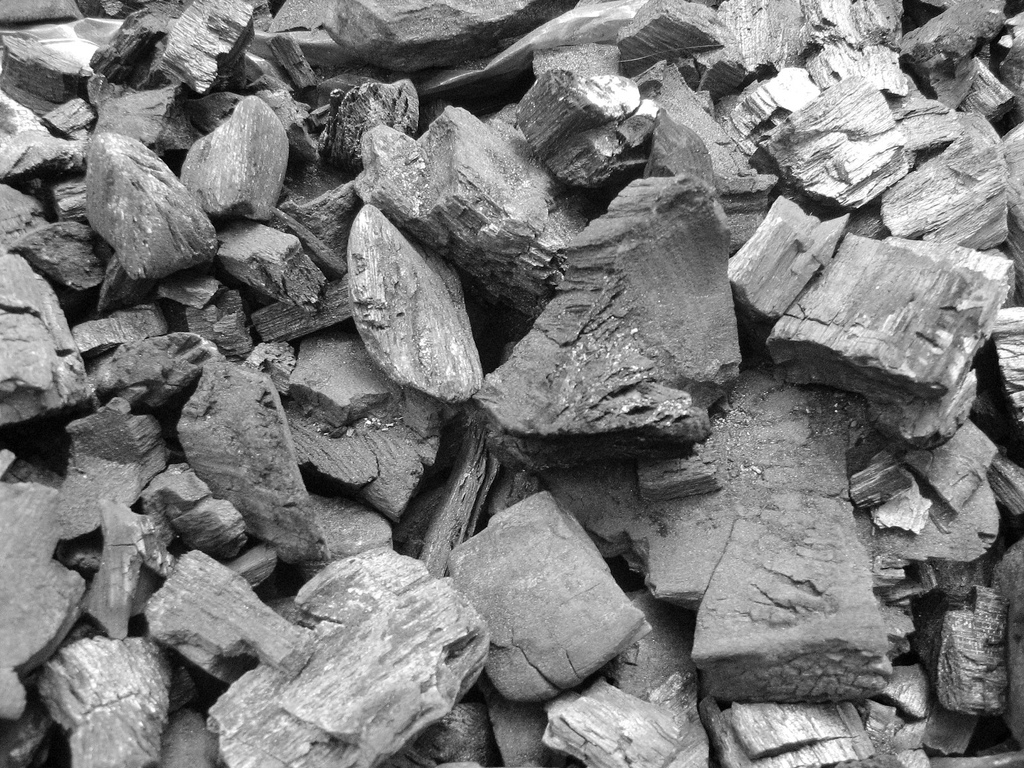 |
| Courtesy Wikipedia under GNU Licence Agreement |
So,
An issue currently facing the scientific community is that of carbon capture and storage, CCS. It is essentially trying to reverse what has been done over the course of a hundred-or-so years of burning fossil fuels. Realistically speaking, storage is the easy part of CCS, in that there have been various proposals for very reasonable places to put captured carbon, including abandoned mines and the seafloor. As an interesting aside, if one were to pump carbon dioxide to the bottom of the ocean, the pressure is so great that water molecules will align to form a "clathrate", a cage which will hold gases there indefinitely. Carbon capture, however, has proven to be incredibly difficult and a challenge to the greatest minds of today. Though I do not rank with those greatest minds, the subject of my honour's thesis was a theoretical study of carbon capture mechanisms using metal organic frameworks. In case you were wondering, I studied copper II benzenetricarboxylate. For now, these frameworks show great potential. Unless some improvement is found, though, they will remain a terrible, terrible idea. The problem here is that carbon dioxide is a very stable molecule, and is not all that easy to trap.
I hope to have at least conveyed that CCS is by no means a trivial problem. That being said, I feel that a good solution may have been "discovered" recently. I use parentheses because the technology is by no means new. In fact many of you, while not adjusting your monocles and top hats, may have handled this technology. You see, outside of the scientific world, this technology is known as "charcoal". Biochar simply refers to charcoal when used for CCS and related purposes. Please do not ask me why they couldn't call it charcoal. Bioscientists go all goofy when they have the opportunity to name things.
I was recently introduced to this idea by a former environmental issues professor (he has a blog here). Biochar has the potential to be an elegant solution to the problem of CCS. Capture, the hardest part of CCS, is accomplished simply by growing woody or cellulosic biomass (trees, grass, what have you). Storage is then rather easy, biochar may come in chunks, briquettes, full bricks, or even as a powder, but all that need be done is to bury it. This scheme gives several advantages over other proposed methods. For one, burying solids is very easy, especially when juxtaposed with methods proposing pumping carbon dioxide into abandoned mineshafts. Other solids have been proposed, such as calcium carbonate. The problem here is that while calcium carbonate (you know it as chalk and Tums' active ingredient), is a solid and very easy to deal with, simply burying it would affect soil pH, and widespread leaching could be devastating. Another benefit is that one would be burying carbon only, and not sacrificing an oxygen molecule for each carbon atom that must be stored, as would be the case with both carbonate or carbon dioxide storage.
In case you have furrowed your brow, wondering what the ecological effects of burying biochar would be, I believe I have an answer. While I am by no means an expert, it is my opinion that no environmental harm would be done by burying this material. My reason for this thinking is terra preta. This term, which in Portugese means "black earth", refers to the enrichment of soil with biochar. It would seem that infertile soil may be made fertile with the addition of biochar. This effect may be noted to a depth of roughly two meters and is stable for timescales on the order of thousands of years. It is an effect similar to that which switchgrass accomplishes with its extensive root system, but far more quick and direct.
A further benefit is that biochar is not difficult to produce. It is the same process as charcoal, in fact, though perhaps with lower-grade feedstocks. Plant matter is heated, causing it to give off water and syngas (carbon monoxide and hydrogen gas), the latter of which could be useful to heat subsequent batches of biochar. The result is carbon (and potentially mineral) rich biochar. I must admit, after learning of this, I became a little upset that my parents have been using a propane barbecue for years when charcoal is a far more sustainable technology.
Looking at this problem from a student's perspective, it all seems so simple and obvious a solution. Biochar could be an excellent CCS solution, one which does not require teams of undergrads toiling away on computers, dreaming up theoretical mechanisms for accomplishing the same thing. I suppose in an ideal world, switchgrass could be used not only for our heating and biofuel needs, but surplus could be set aside as biochar, which could sustainably reverse anthropogenic climate change. Could the biochar even be redirected to fertilise our food crops? The possibilities sure do seem endless.
Until such a time as biochar seems like a terrible idea, I shall continue to hope and dream that it will be widely adopted.
NM
What's the efficiency of carbon capture of biochar as compared with other proposed methods (i.e. how much biochar is required to capture a kilogram of carbon dioxide)? Perhaps compared to copper II benzenetricarboxylate?
ReplyDeleteThat's a great question. I would assume far more than CuBTC. Ideally, the bio- part grows more or less passively without any major energy inputs (switchgrass!). Conversion to char can be accomplished by baking it, or by lighting it on fire, then closing off the air supply. Charcoal is often prepared this way: Dig hole, fill hole with logs, light logs on fire, bury logs, dig up charcoal, profit. I can't be certain without getting knee deep in the literature, but I assume it's fairly high efficiency.
ReplyDelete